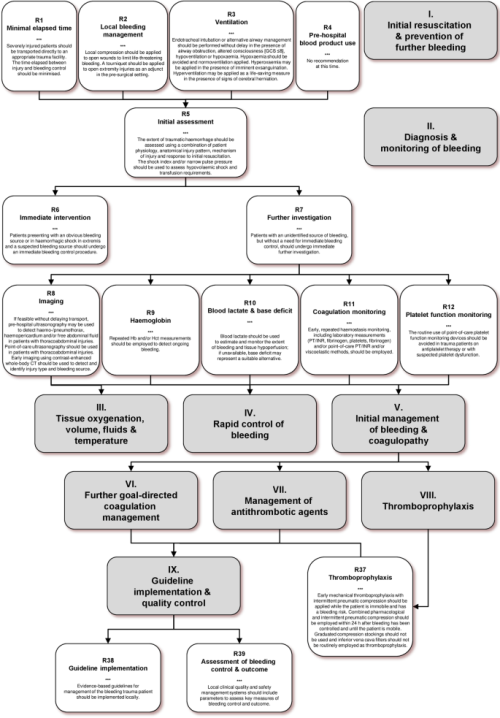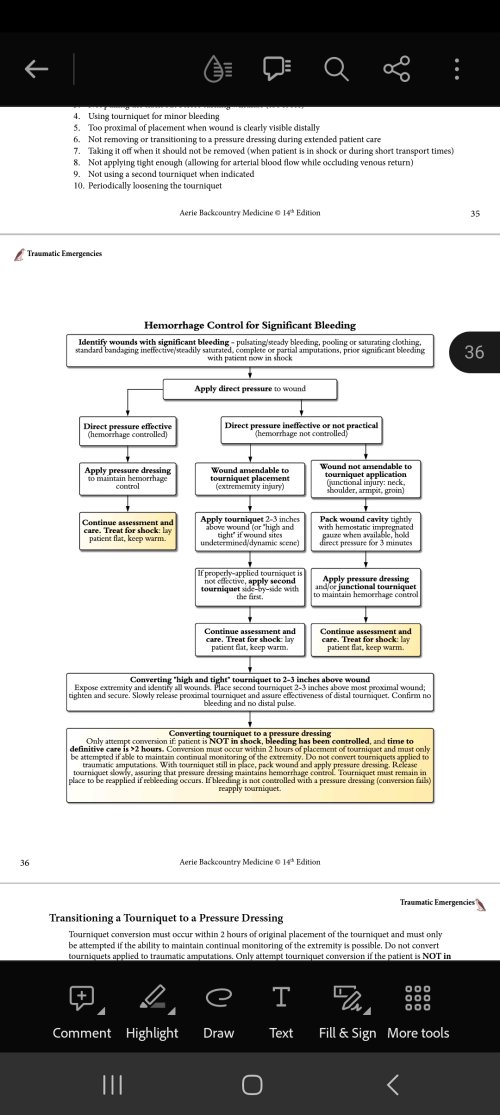seeth07
Well-known member
So in prep for my upcoming Kodiak Elk hunt, my wife and I have been researching and practicing/role playing certain scenarios we might possibly come across requiring first aid. One item we have gone very much in depth on is a deep wound.
Both of us feel pretty good and confident that in the event one of us needs to have a tourniquet, we can get it done and stop the bleeding.
Assuming things go well and we are able to get the tourniquet on, wound packed with bleed stop and gauze/bandage wrap applied, what is next? I wasn't able to use the internet much to find answers to these questions and everything pretty much goes from stopping the bled to call 911 or go to the hospital. Not helpful.
Obviously step one is hit that inreach sos button at this point in time. Immediate extraction is going to be required if a tourniquet is applied. Here are my specific questions though:
1) At what point, if any, should we consider removing the tourniquet. About 2 hours in, it appears serious damage can occur to the limb. If we get the bleeding to stop, can we try to slowly loosen the tourniquet and monitor to make sure it stays stopped?
2) It may not be easy for S&R to get access to us. Moving with a tourniquet applied isn't easy. I applied one to my leg and it doesn't take long before your leg goes numb and limp from lack of blood. Do you just sit tight and wait for S&R to come and assist or do you do whatever it takes to get to an easier accessible spot?
3) Overreaction. What if you applied a tourniquet and after the adrenaline ends and your mind clears you realize that maybe this isn't that bad. What would be some ways to recognize that it's just a bad wound and not a life-threatening one?
Both of us feel pretty good and confident that in the event one of us needs to have a tourniquet, we can get it done and stop the bleeding.
Assuming things go well and we are able to get the tourniquet on, wound packed with bleed stop and gauze/bandage wrap applied, what is next? I wasn't able to use the internet much to find answers to these questions and everything pretty much goes from stopping the bled to call 911 or go to the hospital. Not helpful.
Obviously step one is hit that inreach sos button at this point in time. Immediate extraction is going to be required if a tourniquet is applied. Here are my specific questions though:
1) At what point, if any, should we consider removing the tourniquet. About 2 hours in, it appears serious damage can occur to the limb. If we get the bleeding to stop, can we try to slowly loosen the tourniquet and monitor to make sure it stays stopped?
2) It may not be easy for S&R to get access to us. Moving with a tourniquet applied isn't easy. I applied one to my leg and it doesn't take long before your leg goes numb and limp from lack of blood. Do you just sit tight and wait for S&R to come and assist or do you do whatever it takes to get to an easier accessible spot?
3) Overreaction. What if you applied a tourniquet and after the adrenaline ends and your mind clears you realize that maybe this isn't that bad. What would be some ways to recognize that it's just a bad wound and not a life-threatening one?






